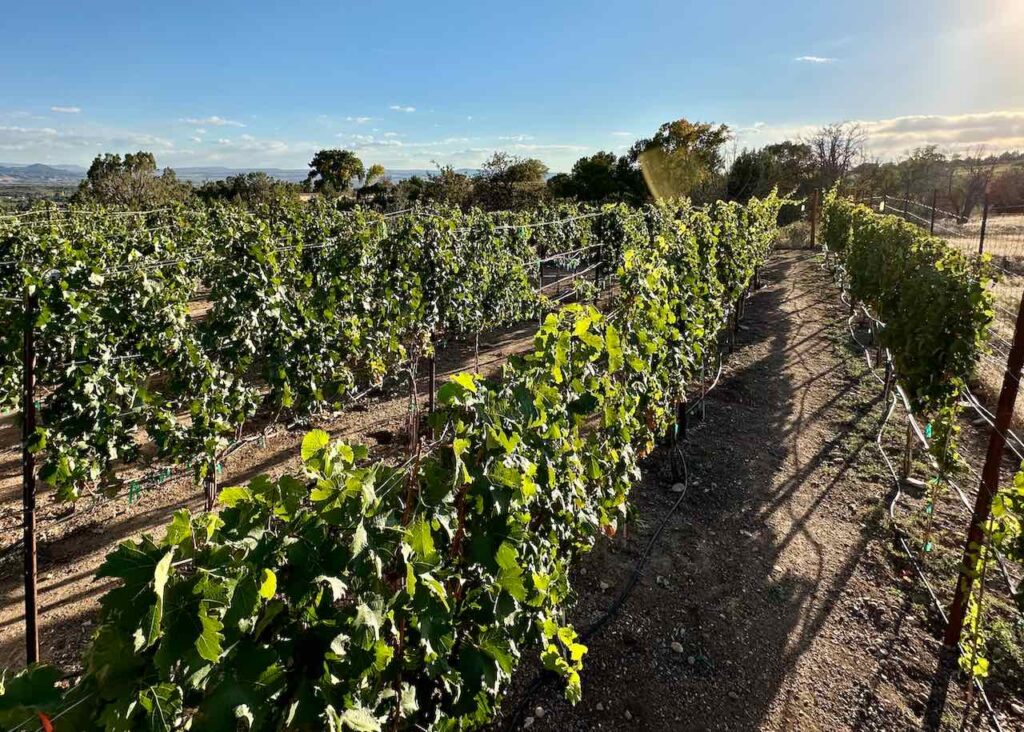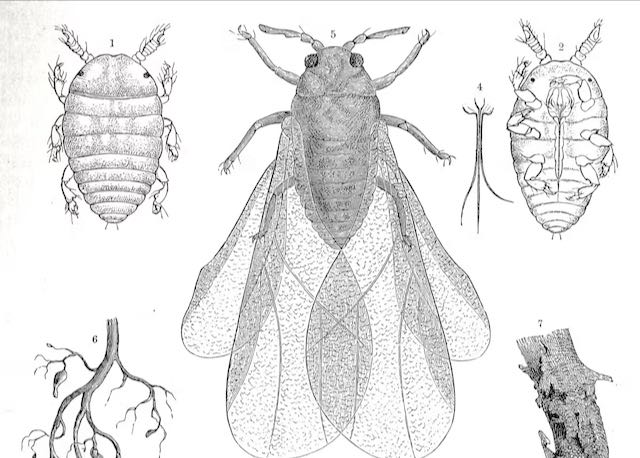How a Devastating Grape Pest is Reshaping Vineyards Across Colorado’s Western Slope (The Conversation)
Charlotte Oliver - CSU Extension
September 24, 2025

Grape phylloxera, or Daktulosphaira vitifoliae, is an aphid-like insect that attacks grapevines with devastating effects. In Colorado, where wine is an estimated US$3.9 billion industry, phylloxera poses a significant threat.
In 2015, several vineyards in the Grand Valley American Viticultural Area on Colorado’s Western Slope observed that groups of their vines were not thriving. The vines were yellowing and producing limited fruit. All the normal issues, such as nutritional deficiencies and irrigation problems, were investigated and nothing turned up.
So, in 2016, two Colorado State University researchers began surveying vineyards in Mesa County and found the industry’s worst nightmare – phylloxera, which had infested the roots in several local vineyards.
The pair expanded their survey and covered more than 350 vineyard acres across Mesa, Delta and Montezuma counties, where wine grapes are grown. Phylloxera was found in both Mesa and Delta counties in 18 vineyards for a total of 34 scattered acres. The phylloxera wasn’t centralized, which made controlling its spread complicated.
In response to the researchers’ findings, the Colorado Wine Industry Development Board and the Colorado Association for Viticulture and Enology began an education campaign in 2017 to minimize visitors to vineyards and help vineyards manage soil movement, the primary mode of phylloxera spread.
As the viticulture extension specialist at Colorado State University, I spend a lot of time helping Coloradans work with their grapevines. In 2024, I took over the research at Colorado State University on the phylloxera infestation that is still active nine years after it was discovered. I plan to continue tracking phylloxera’s spread and training producers on what to do when, not if, this pest appears in their vineyard.
What is Phylloxera?

Phylloxera have two discrete forms during their life cycle: an above-ground, winged form called alates and a below-ground, wingless, root-feeding form called radicoles.
The above-ground form of the insect causes galls, which are lumpy swellings on the grape leaves, that generally have limited impact on the vine’s health.
However, the below-ground insects that feed on the vine’s roots cause severe damage. The roots are the vine’s main tool for foraging for nutrients and water, so when they are compromised the vine starts to suffer and eventually dies four to seven years after being infected. Sometimes phylloxera’s infestation looks like a lack of nutrition or water, so knowing what is wrong with the vines can require a lot of searching and testing. The real issue is that as the vine declines, it also stops producing a commercially viable quantity of fruit, which is 2.5-4 tons per acre. No fruit means no wine, so the vines have to be removed.

